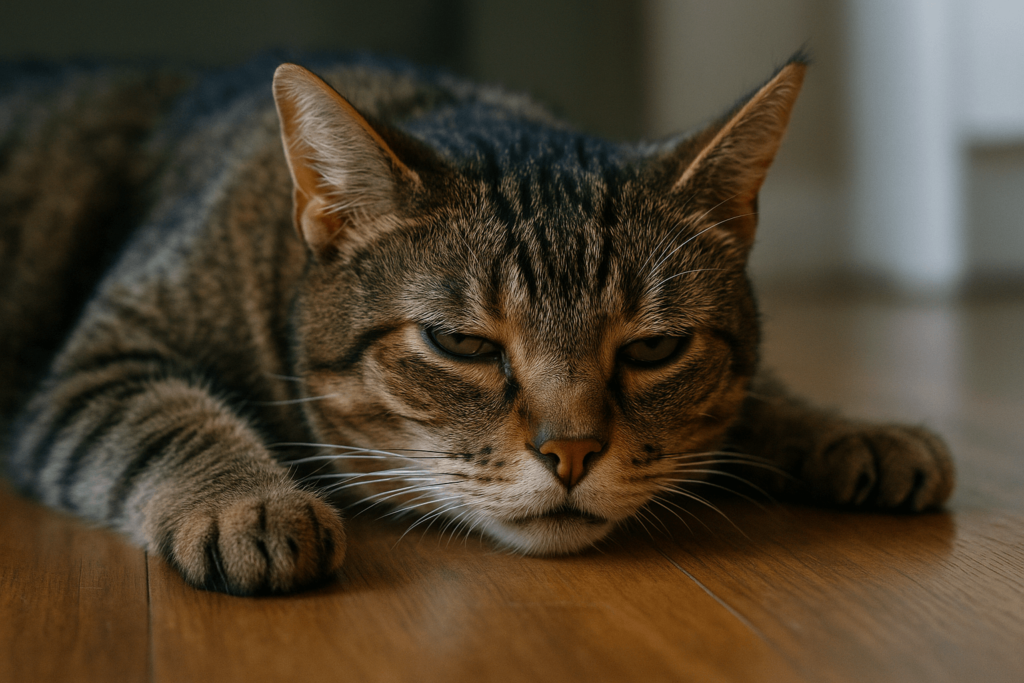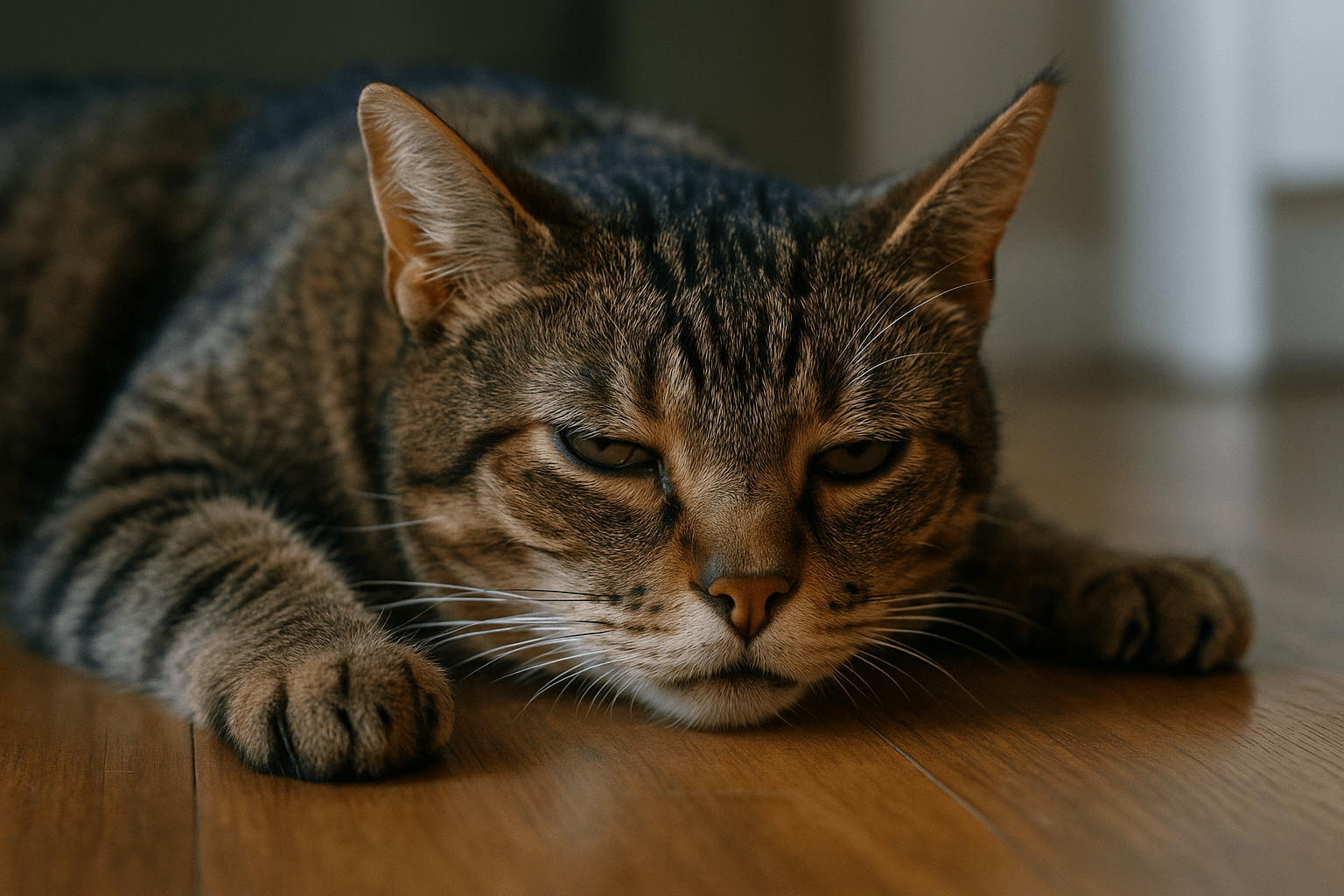Cat Hypoglycemia Symptoms: Recognizing the Silent Crisis Before It’s Too Late
A cat with low blood sugar may look perfectly fine—until they suddenly collapse. Hypoglycemia in cats isn’t always obvious, but its symptoms are urgent, often life-threatening, and easily mistaken for laziness or aging. If your cat seems unusually wobbly, lethargic, or unresponsive, it’s not just “being a cat.” It could be a medical emergency. Understanding the subtle and not-so-subtle signs of cat hypoglycemia can mean the difference between recovery and tragedy.
Why Hypoglycemia Is a Medical Emergency in Cats
Low blood sugar doesn’t just cause weakness—it disrupts brain function, organ performance, and metabolic stability. Cats are especially vulnerable because they can’t store glucose as efficiently as other animals. Here’s why this condition demands immediate attention:
Brain Function Relies on Glucose:
Unlike humans, cats depend almost entirely on glucose for brain energy. When levels drop, neurological symptoms appear rapidly.Rapid Onset, Rapid Decline:
Hypoglycemia can develop in minutes, especially in kittens or diabetic cats on insulin, making delay dangerous.Symptoms Are Easily Misread:
Lethargy, hiding, or lack of appetite are often dismissed as “just being sick,” not recognized as signs of falling blood sugar.Kittens and Tiny Cats Are Most at Risk:
Their small size and high metabolism mean they burn through glucose faster and have fewer reserves.Underlying Disease Is Often the Cause:
Hypoglycemia is rarely isolated—it’s a symptom of something deeper, like liver disease, insulin overdose, or cancer.
Ignoring these signs isn’t patience—it’s risk. A cat with untreated hypoglycemia can slip into seizures, coma, or death within hours.

Common Symptoms of Cat Hypoglycemia You Can’t Afford to Miss
The signs of low blood sugar in cats are often quiet at first—then sudden and severe. Recognizing them early is critical. Here’s what to watch for:
Lethargy or Unresponsiveness:
Your cat may lie still, ignore you, or seem “zoned out”—not sleeping, but unable to engage.Weakness or Wobbliness:
They might stumble, drag their hind legs, or struggle to stand—even if they were active moments before.Tremors or Seizures:
Involuntary shaking, twitching, or full-body convulsions are advanced signs—this is a true emergency.Loss of Appetite or Refusal to Eat:
A cat who turns away from food, even their favorite treat, may be too weak or disoriented to eat.Vomiting or Drooling:
Excess salivation or nausea can occur as the body tries to respond to metabolic imbalance.Pale or Cool Gums:
Check your cat’s gum color—if they’re pale, gray, or cold to the touch, circulation is compromised.Disorientation or Staring into Space:
Your cat may look at walls, furniture, or nothing at all, as if confused or unaware of their surroundings.Rapid Breathing or Heart Rate:
The body tries to compensate for low energy by increasing respiration and heartbeat.Cold Paws or Ears:
Poor circulation from hypoglycemia often makes extremities feel noticeably cooler than normal.Collapse or Unconsciousness:
This is the final stage. If your cat falls over and doesn’t respond, act immediately.
These aren’t “maybe” symptoms. They’re red flags. If you see even two of these, don’t wait—treat or rush to the vet.
Check this guide 👉Understanding Cat Blood Sugar Levels: Best 7 Expert Tips!
Check this guide 👉Understanding Cat Bloodwork Costs: Best 7 Health Tips!
Check this guide 👉Low Red Blood Cell Count in Cats: Best 7 Expert Tips!
| Early Warning Signs | Advanced Emergency Signs |
|---|---|
| Lethargy or decreased activity | Seizures or convulsions |
| Mild wobbliness or unsteady gait | Loss of consciousness or collapse |
| Refusal to eat or drink | Rapid, shallow breathing |
| Excessive drooling or nausea | Pale, cold gums or extremities |
| Mild tremors or muscle twitching | Fixed, glassy stare or disorientation |
Who Is Most at Risk for Cat Hypoglycemia?
Not all cats are equally vulnerable. Certain health conditions, ages, and lifestyles dramatically increase risk.
Diabetic Cats on Insulin:
The #1 cause of hypoglycemia. Even a slight overdose, missed meal, or increased activity can trigger a crash.Kittens Under 12 Weeks:
Their tiny bodies have minimal glucose reserves. Skipping meals—even for a few hours—is dangerous.Toy or Tiny Breeds:
Cats under 5 pounds, like Singapuras or Devon Rexes, burn energy faster and store less.Cats with Liver Disease:
The liver regulates glucose. If it’s failing, blood sugar drops unpredictably.Cats with Pancreatic Tumors (Insulinoma):
Rare but deadly—tumors overproduce insulin, causing chronic, severe hypoglycemia.Overly Active or Stressed Cats:
High energy expenditure without adequate intake depletes glucose rapidly.
If your cat falls into any of these categories, monitor them closely—even small changes in behavior warrant a check-in.
What to Do If You Suspect Hypoglycemia Right Now
Time is critical. Don’t wait for symptoms to worsen. Here’s what to do immediately:
Apply a Sugar Source to the Gums:
Rub honey, corn syrup, or maple syrup on the gums or inside the cheek—do NOT pour it down the throat.Do NOT Force Feed or Give Water:
If your cat is unconscious or seizing, forcing liquids can cause aspiration pneumonia.Keep Them Warm:
Wrap them gently in a towel or blanket. Hypoglycemia lowers body temperature.Call Your Vet or Emergency Clinic:
Even if they seem better after sugar, they need professional evaluation. Glucose levels can rebound dangerously.Prepare for Transport:
Have your carrier ready. Do not delay. This is not something to “wait and see.”
The sugar you apply is a temporary fix—not a cure. But it can buy the minutes your cat needs to survive until treatment.
How Veterinarians Diagnose and Treat Hypoglycemia
Your vet won’t guess—they’ll test, monitor, and treat systematically.
Blood Glucose Test:
A simple finger-stick or venous sample confirms low sugar levels instantly.Full Blood Panel:
Checks liver, kidney, pancreas, and hormone levels to find the root cause.Ultrasound or X-rays:
Used to detect tumors, liver abnormalities, or other internal issues.IV Dextrose Infusion:
For severe cases, glucose is administered intravenously to stabilize quickly.Hospitalization and Monitoring:
Cats are often kept for 24–48 hours to ensure glucose levels remain stable.
Treatment isn’t just about raising sugar—it’s about fixing what caused it. Without addressing the underlying issue, hypoglycemia will return.
Preventing Cat Hypoglycemia: Practical Steps Every Owner Can Take
Prevention is far safer than emergency treatment. Here’s how to protect your cat:
Never Skip Meals:
Especially for diabetic cats or kittens. Feed at consistent times—even overnight if needed.Use Measured Feeding, Not Free-Feeding:
For diabetic cats, precise portions prevent insulin mismatches.Keep Emergency Sugar on Hand:
Store honey or corn syrup in your first aid kit. Label it clearly.Monitor Insulin Doses Carefully:
Double-check syringes. Never adjust dosage without vet approval.Watch for Changes in Behavior:
A quiet cat who hides more, sleeps longer, or eats less may be developing hypoglycemia.Avoid Overexertion After Meals:
Don’t chase or play intensely right after insulin injection.Educate Everyone in the Household:
Kids, guests, and pet sitters must know the signs and what to do.
Prevention isn’t complicated—it’s consistent. Small habits save lives.
The Hidden Dangers of “Mild” Hypoglycemia
Many owners think, “They’re just tired today.” But mild hypoglycemia is often chronic—and just as dangerous.
Repeated Low Spikes Damage Organs:
Each episode stresses the brain, liver, and heart—even if the cat seems fine afterward.Behavioral Changes Are Misdiagnosed:
Cats with recurring low sugar may seem “depressed,” “lazy,” or “old”—leading to delayed treatment.It Can Mask Other Diseases:
Hypoglycemia caused by liver failure or cancer may be treated as a sugar issue alone—missing the real threat.Recovery Isn’t Always Complete:
Some cats suffer neurological damage from repeated episodes, affecting coordination or cognition long-term.
Don’t accept “it’s just a one-time thing.” Recurring low blood sugar is a system-wide alarm. Treat it as such.
FAQ: Cat Hypoglycemia Symptoms
Can a healthy cat get hypoglycemia?
Yes—but rarely. It usually follows prolonged fasting, extreme exercise, or ingestion of toxins like xylitol (found in sugar-free products).
How long can a cat survive with untreated hypoglycemia?
As little as 30 minutes to a few hours. Brain damage begins quickly, and death can follow rapidly without intervention.
Is honey safe for cats in emergencies?
Yes—in small amounts on the gums. It’s a fast-acting glucose source. Do not use artificial sweeteners like xylitol—they are deadly.
My cat had one episode—will it happen again?
Possibly. Unless the root cause is identified and treated, recurrence is likely. Follow-up testing is essential.
Can stress cause hypoglycemia?
Indirectly. Stress can suppress appetite or alter insulin sensitivity, triggering low blood sugar in vulnerable cats.
Act Before It’s Too Late
A cat with hypoglycemia doesn’t cry out. They don’t meow for help. They simply grow quiet, still, and distant—until they can’t stand.
You don’t need to be a veterinarian to save their life. You just need to know the signs. To notice when their purr fades. To recognize when their eyes lose their spark. To act—fast, calm, and certain—when every second counts.
Hypoglycemia doesn’t announce itself with drama.
Canned Pumpkin for Cat Diarrhea: Best 7 Expert Tips! Natural remedy to firm stools, soothe upset bellies, and support gut health safely.
Can a Cat Give You Scabies? Best 7 Expert Tips! Discover the truth about feline mites, human skin risks, and how to protect yourself—without panic.
Cat Flea vs Human Flea: Best 7 Expert Tips! Discover the truth about bites, species, and how to eliminate infestations for good.
Weird Cat Behaviors: Best 7 Expert Tips! Discover why cats do strange things—and how to understand, not punish, their instincts for a happier home.





